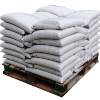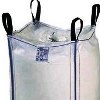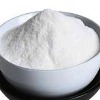| Anmol Chemicals is the pioneer manufacturers of Potassium Bicarbonate, Pharmaceutical Excipients Food & Flavor chemicals in India. We offer Halal and Kosher Potassium Bicarbonate made in an ISO9001, ISO22000 (FSSC22000) cGMP and GLP certified facility. Our group has several manufacturing facilities spread across the world, supported by toll manufacturers and representatives in UAE, Europe, Africa, USA, China and has several associated manufacturing facilities spread across India. All the Information on Physics, Chemistry, Applications, Uses and Technology on Manufacture of Potassium Bicarbonate is in these pages. |
| The units in the group have one or more of the certifications like FDA GMP, ISO 9001, ISO 22000, HACCP, REACH, Kosher & Halal and DMF support is available. |





Potassium Bicarbonate SDS GHS, MSDS, Safety Data Sheet
CAS Number 298-14-6
Potassium Bicarbonate BP grade
Potassium Bicarbonate USP grade
Potassium Bicarbonate FCC Food grade
Potassium Bicarbonate ACS AR Analytical Reagent grade
YOU ARE HERE: Potassium Bicarbonate SDS, GHS, MSDS of Manufacturers
Potassium Bicarbonate SDS GHS, MSDS Sheet, Safety Data Sheet
1. PRODUCT DESCRIPTION
Product Name: Potassium Bicarbonate
Recommended usage: Industrial Manufacturing.
2. HAZARD IDENTIFICATION
GHS, Globally Harmonized System Classification in accordance with 29 CFR 1910
Classification according to Regulation (EC) No 1272/2008
Not a hazardous substance or mixture according to Regulation (EC) No. 1272/2008.
This substance is not classified as dangerous according to Directive 67/548/EEC.
Labeling according to GHS & Regulation (EC) No 1272/2008
GHS Label Elements None |
Signal Words: None
Hazards not otherwise classified (HNOC):
May causes mild skin irritation.
May causes eye irritation.
May be harmful if inhaled.
May cause respiratory irritation.
Precautionary statements:
P261: Avoid breathing dust/fume/gas/mist/vapors/spray.
P262: Do not get in eyes, on skin, or on clothing.
P281: Use personal protective equipment as required.
P302+P352 - IF ON SKIN: Wash with plenty of soap and water.
P303+P361+P353 - IF ON SKIN (or hair): Remove/Take off immediately all contaminated clothing. Rinse skin with water/shower.
P304 + P340 - IF INHALED: Remove victim to fresh air and keep at rest in a position comfortable for breathing.
P305 + P351 + P338 - IF IN EYES: Rinse cautiously with water for several minutes. Remove contact lenses, if present and easy to do. Continue rinsing.
P337+313: If eye irritation persists get medical advice/attention.
HMIS (Perceived): Health hazard: 0, Flammability: 0, Physical hazards: 0
NFPA (Perceived): Health hazard: o, Fire: 0, Reactivity Hazard: 0
3. COMPOSITION/INFORMATION ON INGREDIENTS
Principal Components: Potassium bicarbonate
CAS Number 298-14-6
EINECS EC Number: 206-059-0; Weight Percentage: 99-100%
Molecular Formula KHCO3; Molecular Weight 100.12
4. FIRST AID MEASURES
Always get medical attention after the first aid is over.
Emergency and First Aid Procedures:
Eyes - Flush with water for at least 15 minutes, raising and lowering eyelids occasionally. Get medical attention if irritation persists.
Skin - Thoroughly wash exposed area for at least 15 minutes. Remove contaminated clothing. Launder contaminated clothing before reuse. Get medical attention if irritation persists.
Ingestion - If Potassium bicarbonate is swallowed, if conscious, give plenty of water. Immediately call a physician. Never give anything by mouth to an unconscious person.
Inhalation - Remove to fresh air. Give oxygen if breathing is difficult; give artificial respiration if breathing has stopped. Get medical attention.
5. FIREFIGHTING PROCEDURES
NFPA Rating:
Health: 0
Fire: 0
Reactivity: 0
Extinguisher Media: Use media suitable to extinguish surrounding fire.
Flammable Limits in Air % by Volume: N/A
Special Fire fighting Procedures: Firefighters should wear full protective equipment and NIOSH approved self-contained breathing apparatus.
6. SPILL OR LEAK PROCEDURES
Steps to be taken in Case Potassium Bicarbonate is Released or Spilled:
Ventilate area of leak or spill. Wear appropriate personal protective equipment.
Sweep up and containerize for reclamation or disposal. Vacuuming or wet sweeping may be used to avoid dust dispersal. Small amounts of residue may be flushed to sewer with plenty of water.
7. SPECIAL PRECAUTIONS
Keep Potassium bicarbonate in a well closed container stored under cold to warm conditions, 2 to 40 C, (36 to 104F). Protect against physical damage. Containers of this material may be hazardous when empty since they retain product residues (dust, solids); observe all warnings and precautions listed for the product.
8. SPECIAL PROTECTION INFORMATION
Respiratory Protection (Specify Type): None needed under normal conditions of use with adequate ventilation. NIOSH approved equipment should be worn if PELs are exceeded.
Ventilation Local Exhaust: Yes
Eye Protection: Splash proof chemical safety goggles should be worn at all times.
Other Protective Clothing or Equipment: Lab apron, eye wash, and safety shower.
9. PHYSICAL DATA
Molecular Formula KHCO3
Molecular Weight 100.12
Appearance and Odor: Potassium bicarbonate is white crystalline powder, odorless
Melting Point: Decomposes before melting.
Boiling Point: N/A
Density: 2,17 g/cm3 at 20 °C
Vapor Pressure: N/A
Vapor Density (Air=1): N/A
Specific Gravity(H2O=1): 2.20
Percent Volatile by Volume: 0 (21C)
Evaporation Rate(H2O=1): N/A
Solubility in Water: Highly soluble. 362 g/l at 25 °C
10. REACTIVITY DATA
Stability: Potassium bicarbonate is stable
Conditions to Avoid: Heat, humidity
Incompatibility (Materials to Avoid): Strong oxidizing agents, Strong acids
Hazardous Decomposition Products: Carbon monoxide, carbon dioxide
Hazardous Polymerization: Will not occur
11. TOXICITY DATA
Toxicity Data:
LD50 Oral - rat - > 2.000 mg/kg
LD50 Dermal - rabbit - > 2.000 mg/kg
Conditions Aggravated by Overexposure: Skin and eye irritation
Carcinogenicity: No component of this product present at levels greater than or equal to 0.1% is identified as probable, possible or confirmed human carcinogen by IARC, NTP, ACGIH & OSHA.
12. ECOLOGICAL DATA
Toxicity to fish: LC50 - Oncorhynchus mykiss (rainbow trout) - 1.300 mg/l - 96 h
Toxicity to daphnia and other aquatic invertebrates: EC50 - Daphnia - 630 mg/l
Bioaccumulative potential: Does not bioaccumulate.
EPA Waste Numbers: None
13. DISPOSAL INFORMATION
Waste Disposal Methods: Dispose Potassium bicarbonate in accordance with all applicable Federal, State and Local regulations.
14. TRANSPORT INFORMATION
DOT & ADR/RID
Not regulated.
IMDG
Not regulated.
IATA
Not regulated.
15. REGULATORY INFORMATION
USA:
TSCA Section 12(b) Export Notification (40 CFR 707, Subpt. D)
US. OSHA Specifically Regulated Substances (29 CFR 1910.1001-1050)
None present or none present in regulated quantities.
CERCLA Hazardous Substance List (40 CFR 302.4): None present or none present in regulated quantities.
Superfund amendments and reauthorization act of 1986 (SARA) Hazard categories: Not listed.
SARA 302 Extremely hazardous substance: None present or none present in regulated quantities.
SARA 304 Emergency release notification: None present or none present in regulated quantities.
SARA 311/312 Hazardous chemical: None present or none present in regulated quantities.
SARA 313 (TRI reporting): None present or none present in regulated quantities.
Clean Water Act Section 311 Hazardous Substances (40 CFR 117.3): None present or none present in regulated quantities.
Clean Air Act (CAA) Section 112(r) Accidental Release Prevention (40 CFR 68.130): None present or none present in regulated quantities.
US. California Proposition 65: No ingredient regulated by CA Prop 65 present.
US. New Jersey Worker and Community Right-to-Know Act: No ingredient regulated by NJ Right-to-Know Law present.
US. Massachusetts RTK - Substance List: No ingredient regulated by MA Right-to-Know Law present.
US. Pennsylvania RTK - Hazardous Substances: No ingredient regulated by PA Right-to-Know Law present.
US. Rhode Island RTK: No ingredient regulated by RI Right-to-Know Law present.
Canada WHMIS: Not Listed
EINECS EC Number 206-059-0
16. ADDITIONAL INFORMATION
Disclaimer:
*******************************************
Our company provides this Potassium Bicarbonate MSDS information sheet contained herein in good faith but makes no representation as to its comprehensiveness or accuracy. This Potassium Bicarbonate SDS is intended only as a guide to the appropriate precautionary handling of the material by a properly trained person using this product. Individuals receiving the information must exercise their independent judgment in determining its appropriateness for a particular purpose.
*******************************************
Potassium Bicarbonate Manufacturers
Anmol Chemicals
S-8, SARIFA MANSION, 2ND FLANK ROAD, CHINCHBUNDER, MUMBAI 400009, INDIA
TEL: (OFFICE) 91-22-23770100, 23726950, 23774610, 23723564. FAX: 91-22-23728264
e-mail: anmolc@mtnl.net.in

Exports to USA, Canada, UAE, Dubai, South Africa, Tanzania, Kenya, Nigeria, Egypt, Uganda, Turkey, Mexico, Brazil, Chile, Argentina, Europe Netherlands, Italy, Spain, Germany, Portugal, France, Malaysia, Indonesia, Thailand, Vietnam, Korea, Japan, etc.
Copyright and Usual Disclaimer is Applicable January 31, 2022